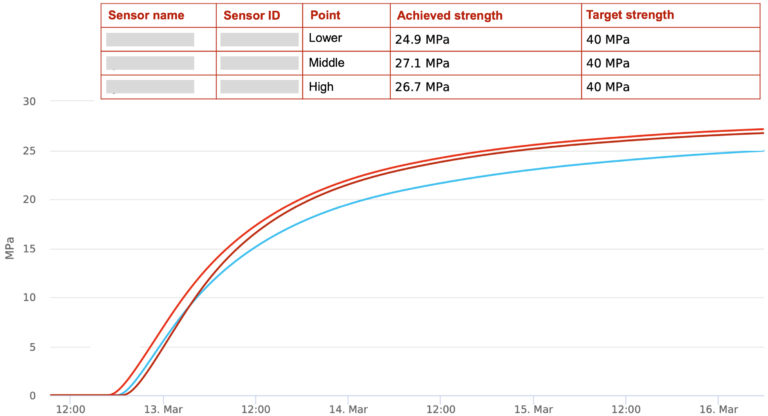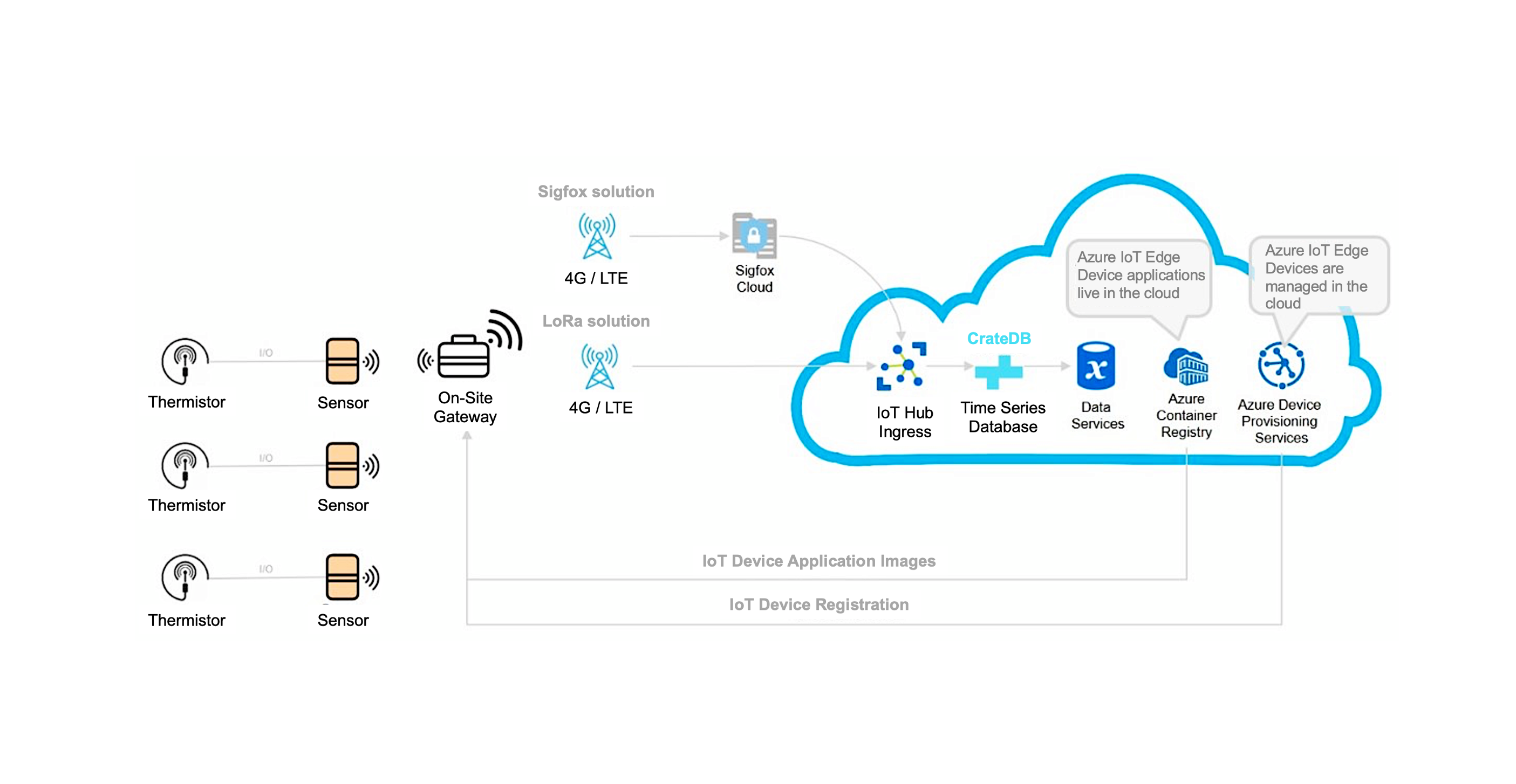Thomas Concrete Group: Real-Time Sensor Monitoring
Thomas Concrete Group, a world-leader organization in the construction industry with 150+ concrete plants and 2,100+ employees, uses CrateDB in two different use cases, the first one being the tracking of their concrete delivery trucks. The concrete pouring is a critical moment in construction: any mistakes made in this phase can lead to higher costs in the future. With the tracking information being displayed in the online portal and a mobile app, construction managers can know precisely when the concrete truck will arrive at the construction site, which allows them to prepare accordingly.

The customer can follow the exact position of the concrete delivery truck in the online portal or the mobile app, making sure everything is ready on-site for the pouring
Thomas Concrete also uses CrateDB to track the curing of the concrete in real-time. The concrete curing will influence the final strength of the concrete, and it is a phase that requires careful monitoring. To allow customers to remotely check its temperature and strength during this period, Thomas Concrete inserts digital sensors inside the concrete, measuring its temperature and sending this data stream to CrateDB. The concrete strength is calculated from this data using proprietary software developed by Thomas Concrete Group.

Thanks to the digitalization of the curing-monitoring setup, customers can download PDF reports that include graphs like this one, showing the actual strength of the concrete and its evolution over time
The developers at Thomas Concrete Group chose CrateDB because of its scalability and high performance for both reads and writes. In global use cases, it is essential to use a database prepared to handle ever-growing data volumes; furthermore, the database must ingest and query this data with very little latency. On top of this, the Thomas Concrete team needed a resilient database, with a NoSQL foundation able to handle their JSON data structures. And the strength monitoring use case required support for edge modules, as internet connectivity is often of low quality in construction sites.
CrateDB happened to check all the boxes. After the first tests, the results were proved excellent. "The initial technical discussions with the Crate.io engineers paid off, as it helped us to verify the technical and business requirements," said Kristoffer Axelsson, Principal Solution Architect for Thomas Concrete Group. "CrateDB is now an integral part of our big data streaming architecture, and it is delivering as promised."

Thomas Concrete integrates CrateDB in the Azure ecosystem for both projects. For example, this figure outlines the architecture of the strength tracking use case, with the raw sensor data being ingested by CrateDB through Azure IoT Hub. The services and CrateDB are hosted in a Kubernetes cluster with 3 nodes and 12 cores.
